Easy Crock Pot Chicken + Overnight Stock
We wanted to offer a tasty whole-chicken recipe for the super-busy Fresh Forker who still wants to put a delicious meal (or 2 or 3!) onto the table. We've tried to pare this whole-chicken recipe down as much as possible, without sacrificing taste, so into the crock-pot or slow-cooker it goes!
Bring your chicken out of the fridge and allow to warm up to almost room temp. Tip: our large frozen chickens take 1-2 full days to thaw in the fridge. Blend your spice rub if you're making your own, or you can buy a poultry seasoning blend in store.
Place the carrots, the celery, the onion, the garlic and the bay leaves into the bottom of a slow-cooker.

Remove the giblets from the chicken-- the liver, heart, gizzard, kidneys and neck-- and set aside. Here is an illustrated guide from the Kitchn on Giblets. Keep the neck for stock, but the rest can either be tossed, cooked up for your kitty, or if you're really ambitious you can save the livers to make your own pâté.
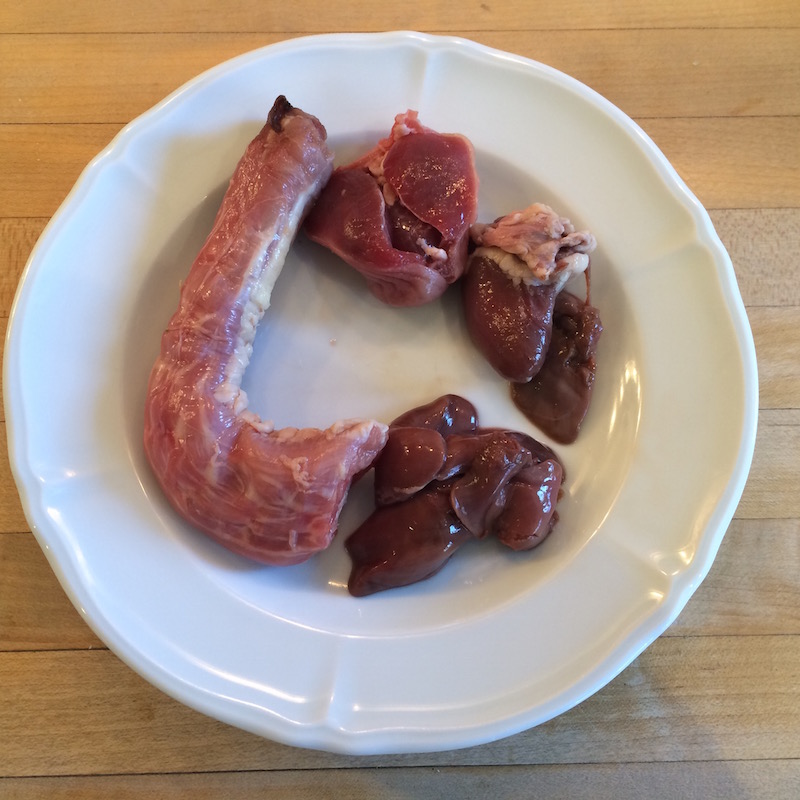
Rinse your chicken and pat it dry. Rub the spice blend into the chicken: on the outside of the skin as well as underneath the skin next to the breast meat. Stuff the lemon halves inside the chicken (you can skip the lemon if using stewing chickens.)
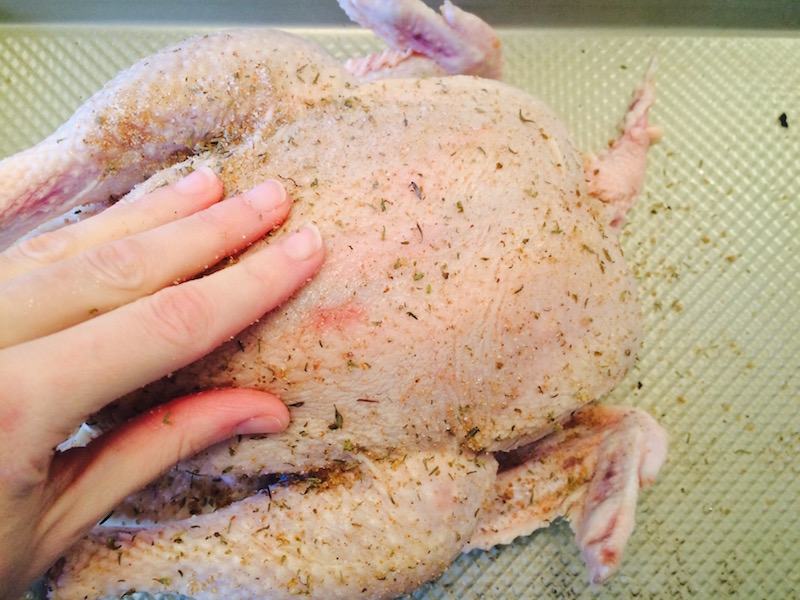
Place the chicken breast-side down on top of the veggies in the crock pot, and pour the wine or stock around the perimeter of the chicken. Cooking it breast-side down makes for an all-over juicier bird.
Turn your slow-cooker on to low and cook for 4 hours (for smaller birds, less than 5 lbs, you might only need 2 to 2.5 hours.) When the timer goes off, wiggle a leg-- it should move pretty easily if it's done. Insert a meat thermometer into the thickest part of the thigh to make sure it's 165-- when pierced, the juices should run clear.
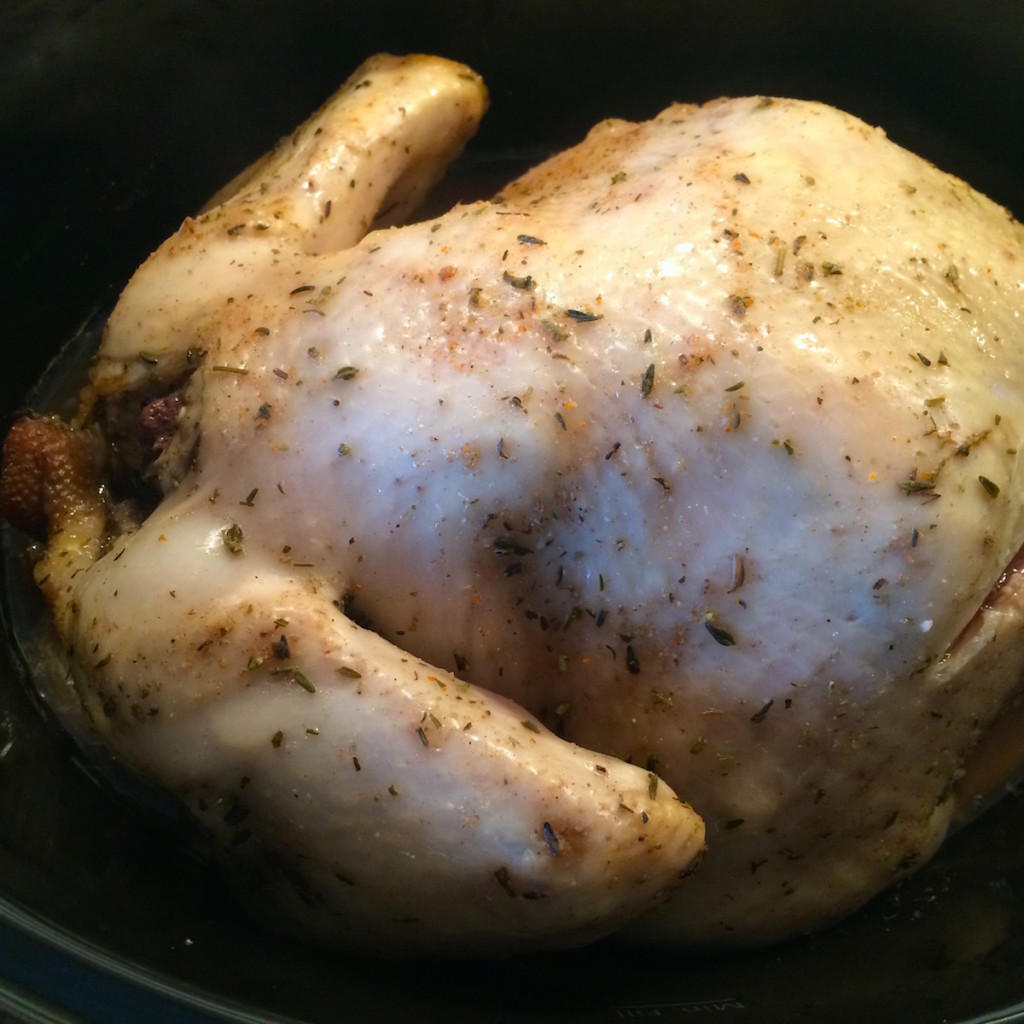
Tip: we used a larger bird--about 5.5 lbs-- and after 4 hours on low it was only at 155. We bumped the heat up to high for an additional 30 minutes and it reached 165 and the juices ran clear.
When it's done, remove the chicken from the crockpot, but leave everything else in there (squeeze in the lemon juice, but discard the lemon halves.) Carve your chicken, serve it up for dinner or save it for soup, pot pies, chicken salad, sandwiches for the week or whatever you'd like. The skin is pretty rubbery, so it can be discarded.
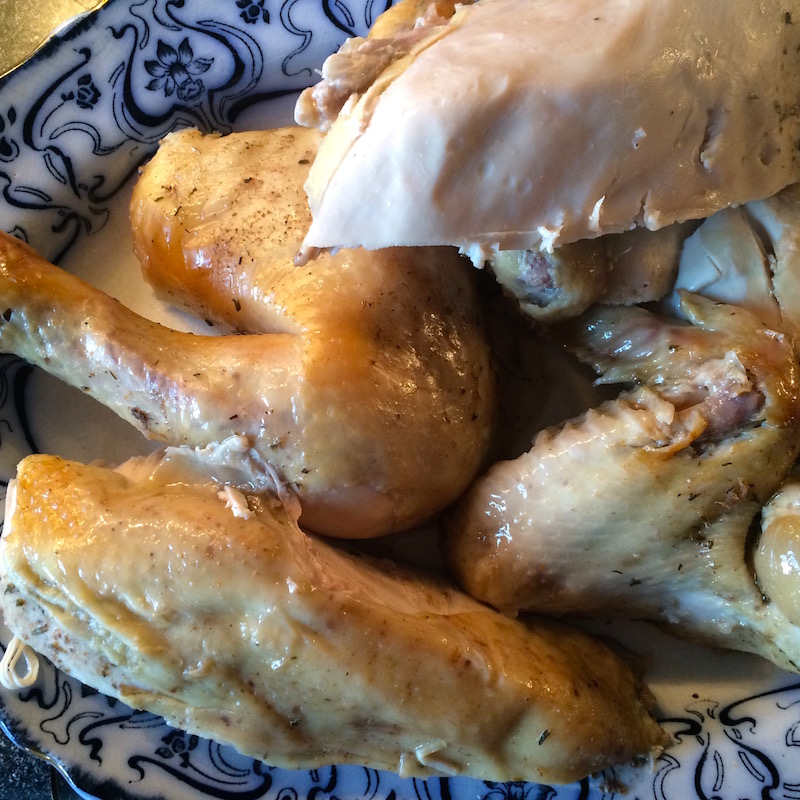
Return all the bones, the chicken back and the reserved chicken neck into the crock pot. Add in the fresh batch of veggies (carrots, onions, celery), maybe another bay leaf and as much water as covers it all up. Turn it to low, and cook for at least 8 hours or up to 12. If you're awake for the first bit of the cooking, you can skim some of the fluff that appears on the top, but this isn't really necessary unless you want a very clear stock.
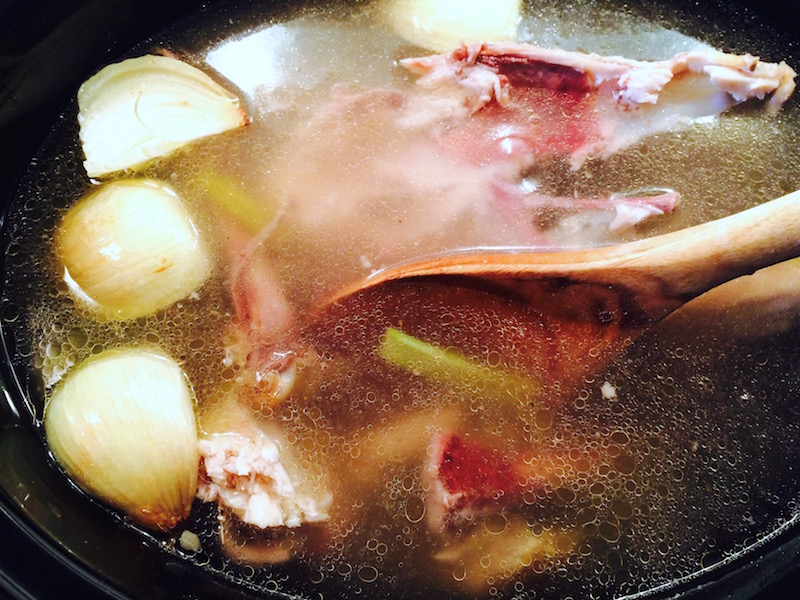
When it's done, strain out all the solids by passing through a cheesecloth or clean kitchen towel-lined strainer, pressing out as much liquid from the veggies as you can.
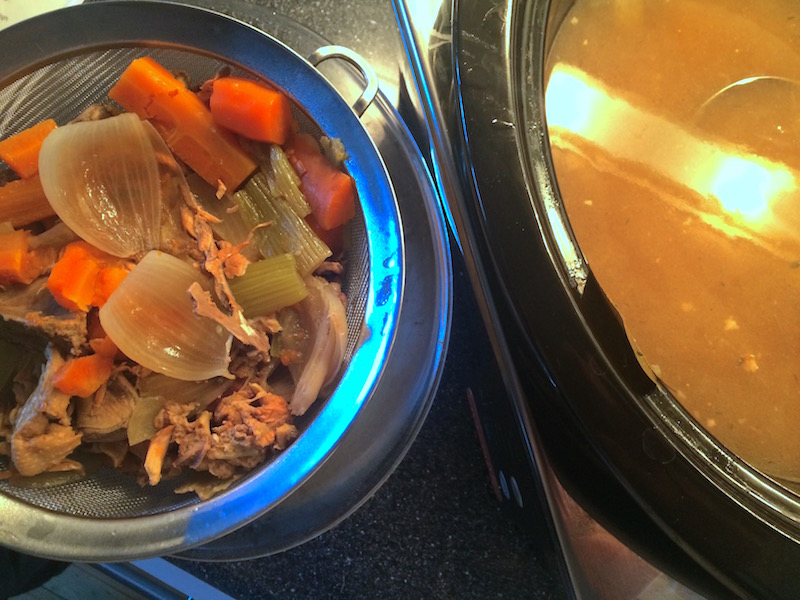
Tip: I like to do this in two steps. First I just use an un-lined strainer and get out the bones and spent veggies. Then I pass it through a lined strainer to get out all the little flecks and remnants so I have a clearer stock.
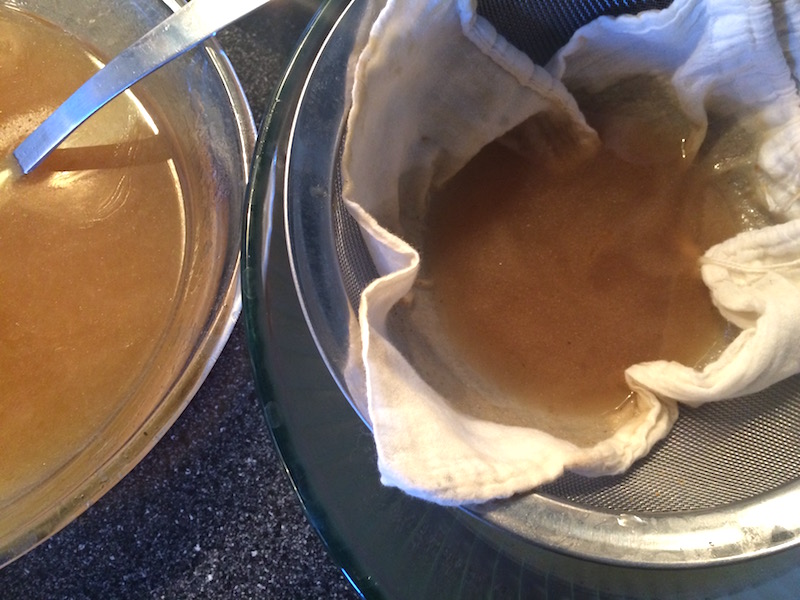
Allow to cool on the counter, and then refrigerate in a large container. After a few hours, the fat will congeal on the top-- scoop off the layer and throw it away. You can reduce the stock even further if you want a concentrated version for storage (read: smaller containers!)
Label the containers with how much stock and when it was made for easy use later on. Also, if you use plastic bags, freeze them flat on a cookie sheet or cutting board so you can store the stock upright like a book. Now you have a fridge or freezer full of stock! Use it to make a delicious soup or in any recipe that calls for chicken stock.
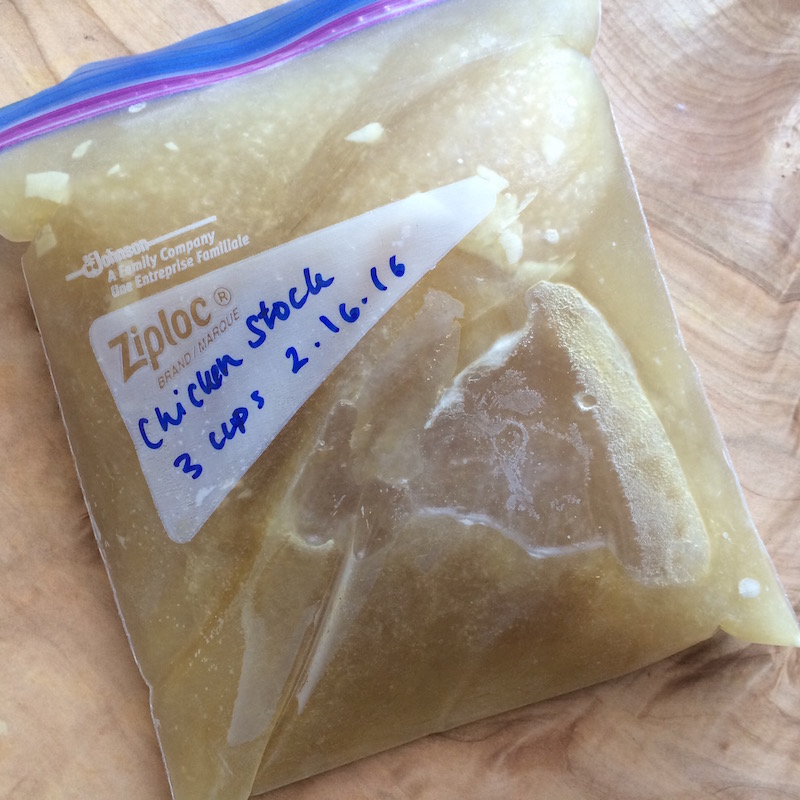
Ingredients
Directions
Bring your chicken out of the fridge and allow to warm up to almost room temp. Tip: our large frozen chickens take 1-2 full days to thaw in the fridge. Blend your spice rub if you're making your own, or you can buy a poultry seasoning blend in store.
Place the carrots, the celery, the onion, the garlic and the bay leaves into the bottom of a slow-cooker.

Remove the giblets from the chicken-- the liver, heart, gizzard, kidneys and neck-- and set aside. Here is an illustrated guide from the Kitchn on Giblets. Keep the neck for stock, but the rest can either be tossed, cooked up for your kitty, or if you're really ambitious you can save the livers to make your own pâté.

Rinse your chicken and pat it dry. Rub the spice blend into the chicken: on the outside of the skin as well as underneath the skin next to the breast meat. Stuff the lemon halves inside the chicken (you can skip the lemon if using stewing chickens.)

Place the chicken breast-side down on top of the veggies in the crock pot, and pour the wine or stock around the perimeter of the chicken. Cooking it breast-side down makes for an all-over juicier bird.
Turn your slow-cooker on to low and cook for 4 hours (for smaller birds, less than 5 lbs, you might only need 2 to 2.5 hours.) When the timer goes off, wiggle a leg-- it should move pretty easily if it's done. Insert a meat thermometer into the thickest part of the thigh to make sure it's 165-- when pierced, the juices should run clear.

Tip: we used a larger bird--about 5.5 lbs-- and after 4 hours on low it was only at 155. We bumped the heat up to high for an additional 30 minutes and it reached 165 and the juices ran clear.
When it's done, remove the chicken from the crockpot, but leave everything else in there (squeeze in the lemon juice, but discard the lemon halves.) Carve your chicken, serve it up for dinner or save it for soup, pot pies, chicken salad, sandwiches for the week or whatever you'd like. The skin is pretty rubbery, so it can be discarded.

Return all the bones, the chicken back and the reserved chicken neck into the crock pot. Add in the fresh batch of veggies (carrots, onions, celery), maybe another bay leaf and as much water as covers it all up. Turn it to low, and cook for at least 8 hours or up to 12. If you're awake for the first bit of the cooking, you can skim some of the fluff that appears on the top, but this isn't really necessary unless you want a very clear stock.

When it's done, strain out all the solids by passing through a cheesecloth or clean kitchen towel-lined strainer, pressing out as much liquid from the veggies as you can.

Tip: I like to do this in two steps. First I just use an un-lined strainer and get out the bones and spent veggies. Then I pass it through a lined strainer to get out all the little flecks and remnants so I have a clearer stock.

Allow to cool on the counter, and then refrigerate in a large container. After a few hours, the fat will congeal on the top-- scoop off the layer and throw it away. You can reduce the stock even further if you want a concentrated version for storage (read: smaller containers!)
Label the containers with how much stock and when it was made for easy use later on. Also, if you use plastic bags, freeze them flat on a cookie sheet or cutting board so you can store the stock upright like a book. Now you have a fridge or freezer full of stock! Use it to make a delicious soup or in any recipe that calls for chicken stock.

